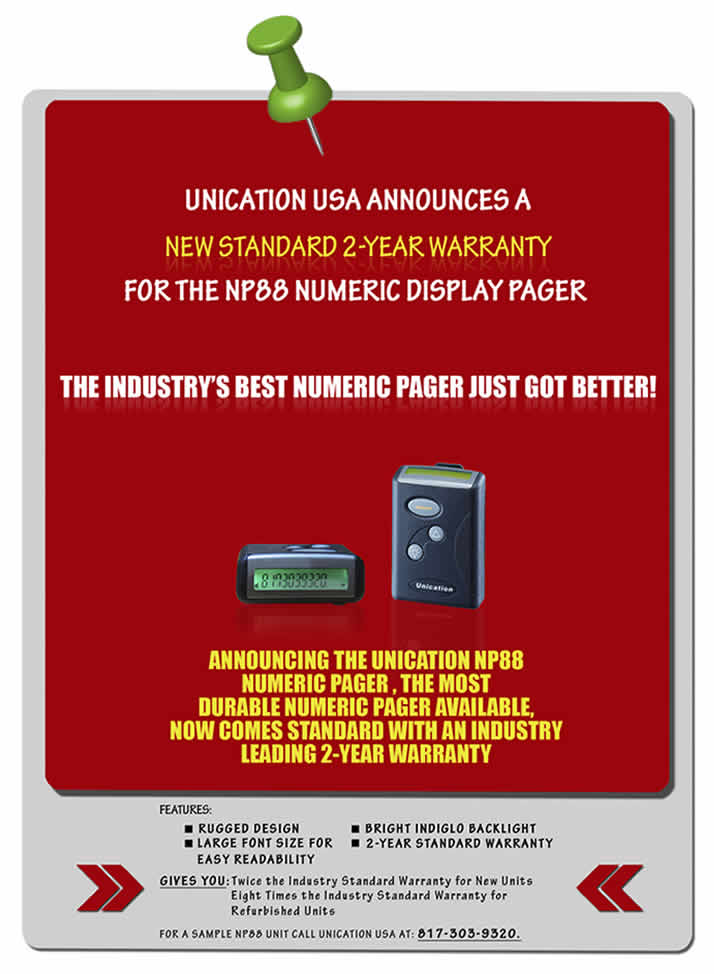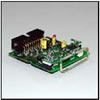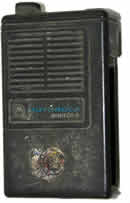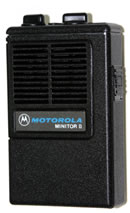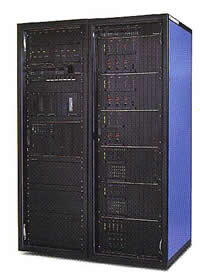BloostonLaw Telecom Update Published by the Law Offices of Blooston, Mordkofsky, Dickens, Duffy & Prendergast, LLP [Portions reproduced here with the firm's permission.] www.bloostonlaw.com |
| Vol. 13, No. 10 | March 10, 2010 |
 INSIDE THIS ISSUE - FCC proposes to transition High Cost Fund to support broadband over 10 years.
- Strickling, Adelstein update House panel on broadband.
- Genachowski outlines small business proposals in NBP.
- FCC may release spectrum for “free or low cost” broadband.
- Comment cycle set for rural radio proceeding.
|
FCC Proposes To Transition High Cost Fund To Support Broadband Over 10 Years FCC staff last week briefed Capitol Hill and the press on Universal Service Fund (USF) proposals included in the National Broadband Plan (NBP) that will be unveiled at the Commission’s March 16 open meeting. What follows is a summary of press and industry reports. However, this is only a preliminary view; it is not set in stone. We will have to await the details of the Plan and certainly the lengthy rulemaking process that will follow. The FCC’s National Broadband Plan will propose transitioning the current high-cost USF to support broadband over a 10-year period. The transition will take place over 10 years to a new “Connect America Fund” (CAF) that will support broadband, and the fund will support only one network provider per geographic service area on a technology-neutral basis, so that the solution could be either wireline, wireless, or satellite. The selected provider would receive support via a “market-based mechanism,” but it unclear what that mechanism would be. Also, there will be a separate “Mobility Fund” to expand the reach of 3G wireless networks. Under this Fund, money would go to service providers in states where 3G service is considered to be “below the national average.” (But the “national average” is not defined.”) According to Blair Levin, Executive Director of the Omnibus Broadband Initiative (OBI), the goal would be to make broadband available to more than 99% of Americans without any additional Congressional appropriations within 10 years. The NBP will state, however, that broadband goals will be achievable more quickly if Congress is willing to provide an additional $9 billion in three $3 billion increments over three years, Levin said. Connect America Fund: Initially, carriers will only receive support from the CAF for broadband deployment to areas that are presently “unserved,” which will be defined as being “served” below a certain yet to be determined speed. The minimum speed will be adjusted periodically. During the transition, rural incumbent local exchange carriers (ILECs) will continue to receive “legacy” support; however, Interstate Common Line Support (ICLS) will be frozen. There will be no net increase in the overall size of the Fund. This will be accomplished by: - eliminating all legacy competitive eligible telecommunications carrier (CETC) support
- targeting IAS (a price cap carrier mechanism) –toward broadband deployment
- freezing ICLS
- moving rate of return carriers to incentive regulation.
FCC Senior OBI Advisor Carol Mattey noted that funding would be determined on a provider- and technology-neutral basis. In some areas, she said, extending fiber closer to end users might be the best solution, while in other cases, fixed wireless or satellite might be more economical. If more than one provider is interested in serving an area, she said it is a possible to use a (yet undetermined) market-based mechanism to select the provider and the amount of support. Intercarrier compensation reform will also occur over the transition period. Initially, intrastate rates will be brought down to interstate levels. By the end of the transition, per-minute access charge rates will be eliminated entirely. Carriers can still negotiate flat rates amongst themselves. Carriers will be able to receive access replacement funding. However, there will be a modest subscriber line charge (SLC) increase and the imputation of a local benchmark rate. While per-minute rates will still exist, there will be rules to address phantom traffic. There will be a recommendation to broaden the base of USF contributors, but nothing specific was revealed. Rulemaking proceedings are expected to be launched during the 2010-2011 period, with implementation of the CAF to begin in 2012. The transition is expected to be completed by 2020. According to press reports, the FCC’s Mattey said the CAF will favor areas where market conditions do not support commercial broadband buildouts. The plan would also favor areas where the cost of extending broadband would be relatively low, requiring only capital expenditures. In other words, the FCC would target areas where it is cheaper to provide service. Such projects, she said, might begin receiving funding as early as 2012. Reforms also call for freezing support to small rate of return carriers, who draw most heavily from the USF today, and are shifting more funding toward price cap companies such as AT&T, Verizon, Qwest and mid-size Independents. Of seven million homes that do not have broadband today, only one-third are served by the small rate of return carriers while the other two-thirds are in areas served by price cap companies, Mattey said. The plan also will call for the phase-out of the per-minute access charge system, beginning in 2012. Instead service providers will be encouraged to develop an alternative methodology for compensating one another similar to what Internet-based providers have established for interconnections. Levin conceded that migrating the fund required some hard calls in terms of shifting money from current recipients, but pointed out as he has before that the FCC is not playing Santa Claus, but dealing in the real world. One area where they will be shifting some of that fund support to broadband will be from CETCs. That’s mostly wireless phone providers, where there could be cases in which wired service and wireless service for a parent, and plans for the kids, could all be getting USF support, according to The Associated Press. “There has always been something suspect about the CETC process, “said Federal-State Joint Board on Universal Service Commissioner John Burke in a statement. “The current approach to funding multiple carriers to provide service where ostensibly there is not [an] economic business case to support even one has never made much sense. IN SUM: As noted above, it is not clear at this time what the National Broadband Plan will propose, and if the proposals will be accepted by Congress, or even survive the lengthy rulemaking and judicial review process. Some of the current reports, in fact, are contradictory about whether the CAF is meant to support only one provider per geographic area, or one wireline and one wireless service provider per geographic area. It is also not clear what the specific relationship is between the CAF and the Mobility Fund. Nevertheless, even this preliminary report offers a caveat that clients should not take lightly. BloostonLaw contacts: Ben Dickens, Gerry Duffy, and Mary Sisak. Strickling, Adelstein Update House Panel On Broadband In his testimony at last week’s House telecommunications subcommittee oversight hearing on the American Recovery and Reinvestment Act, Lawrence Strickling, head of the National Telecommunications and Information Administration said NTIA is on track to meet its statutory obligation to award all grant dollars by September 30, 2010. Strickling said that by the end of that week (i.e., by March 5), NTIA will have awarded 111 Recovery Act grants totaling $1.1 billion. He said NTIA has funded projects in all 50 States and several territories as well. This includes 52 broadband mapping grants totaling approximately $100 million, and 59 Broadband Technology Opportunities Program (BTOP) grants worth more than $960 million. An additional $270 million in matching contributions has been pledged by the applicants themselves. Recently, Strickling said, NTIA announced an extension of the March 15, 2010, filing deadline for all infrastructure projects to March 26, 2010. The deadline for filing applications for Round 2 Public Community Centers and Sustainable Broadband Adoption projects remains March 15, 2010. The Rural Utilities Service (RUS) and NTIA issued separate Notices of Funds Availability (NOFAs) in Round Two to allow each agency to focus on its distinct funding objectives. “We took this action in response to feedback received from Round One applicants, and it will help speed application review. RUS and NTIA will continue to collaborate to maximize the impact of available federal funding, to best leverage the experience and expertise of each agency, and to avoid duplication in projects funded by the two agencies,” Strickling said. He said that NTIA also made a number of targeted changes to increase efficiency, sharpen BTOP’s funding focus, and improve the applicant experience. Based on Round One experience, NTIA formally adopted the “comprehensive communities” approach under which it will give review and funding priority to infrastructure projects that emphasize middle mile broadband capabilities offering new or substantially upgraded connections to community anchor institutions. NTIA also made adjustments to the online application that will streamline the intake of information and reduce applicant burden. These steps include eliminating the joint NTIA/RUS application, increasing the amount of time available to applicants to submit due diligence materials, and eliminating or altering a number of previously required attachments. These improvements, coupled with significantly upgraded applicant support services and bolstered back-office portal functionalities, will improve the applicant experience and facilitate the application process this time around. “Early indications suggest there will be a strong demand for Round Two funding,” Strickling said. “In January, we established BroadbandMatch, which allows applicants to identify potential project partners. This online tool allows a broadband infrastructure provider to identify potential project partners, like universities, hospitals, or libraries for a proposal to bring high-speed Internet service to their facilities. More than 1,200 entities have signed up for BroadbandMatch, including anchor institutions, small and disadvantaged businesses, non-profits, public safety entities, municipalities, tribal organizations, technical experts, and others. “I have high hopes that this forum will lead to truly comprehensive projects that meet the broad needs of entire communities, which is the centerpiece of Round Two funding. In addition, we are encouraged by the number of applications that applicants have started online, including many from new applicants who did not participate in Round One. These early results are encouraging and show that there is keen interest in the grant program across the stakeholder community.” Oversight and Compliance.
As Round One wraps up and Round Two starts, Strickling said NTIA is making headway on of the necessary oversight and compliance of awardees. Since the inception of the program, NTIA has been working with the Department of Commerce’s Inspector General to design the program in a manner that minimizes the risk of waste, fraud, and abuse. NTIA has developed rigorous post-award processes for grants including: - training sessions for applicants and awardees;
- oversight of every awardee's project progress;
- auditing of an awardee’s grant administration;
- requiring extensive reporting from awardees; and
- developing an outline of best practices.
He said NTIA is committed to ensuring that taxpayers’ money is spent wisely and efficiently. NTIA has been working to develop comprehensive monitoring, reporting, and oversight systems to ensure that BTOP funds fulfill the purposes of the Recovery Act, and using a risk assessment model to determine the level of monitoring required for each project. Recipients that expend $500,000 or more of federal funds during the fiscal year will be required to submit an organization-wide financial and compliance audit report. For-profit awardees will be required to comply with the program-specific audit requirements. In addition, grant recipients will be required to report quarterly and annually on the progress of their project and their use of grant funds. Infrastructure awardees will be required to demonstrate progress in achieving important programmatic goals such as broadband availability, adoption, transmission speeds, and prices associated with their projects. Recipients of Public Computer Center funding will be required to provide information on the expansion of their facilities and training provided to their users, and Sustainable Broadband Adoption recipients will report information on their success in stimulating demand and adoption. In addition to these BTOP-specific reporting requirements, grant recipients must comply with Recovery Act reporting requirements that include detailed information regarding the use of funds and jobs created. Short- and Long-Term Benefits.
According to Strickling, the lessons learned from the BTOP-funded projects and broadband mapping efforts can be leveraged to help improve the nation’s broadband landscape in the coming years. In the short-term, the metrics associated with these programs are just starting to materialize. The first awardees are in the early stages of turning their funded proposals into reality, and will file their initial reports next month; mapping grantees will provide their first data sets at the end of the month. I think, however, that it will be important to measure the results against the baseline, capture the lessons learned, and share the information so that successes can be replicated. In the short-term, Strickling continued, the Department of Commerce’s investments will help create thousands of jobs for building infrastructure, installing computers, and developing and implementing outreach to broadband consumers. At this early stage, it is impossible to predict the precise number of jobs the BTOP program will create. However, the jobs range from manufacture of fiber optic cable and other high-tech components, to the stringing of that fiber from pole-to-pole, to trenching, and to the installation of broadband networking hubs. Computer centers need to be built, and new computers and related hardware and software will be installed and networked into public computing centers in the short-term as well. Outreach strategies need to be planned and executed, and trainers will need to be trained how to best provide communities with needed broadband information and skills. The data we collect in the near-term will show how the broadband initiatives contributed to the overall Recovery Act economic stimulus activity. It will also start establishing the measurable impact these projects will have. In the longer-term, Strickling said, BTOP investments will have secondary benefits that will be critical to the nation's overall economic future. BTOP-funded projects will help bridge the digital divide, improve the nation’s education system, provide improved access to better health care, heighten safety and security, increase employment options, foster innovation, and boost economic development for communities held back by limited or no access to broadband. These investments will also help preserve America’s economic competitiveness in the world, and will accrue benefits especially to disadvantaged, rural, and remote America. The ripple effects of these broadband investments could be positively transformative. Jonathan Adelstein, Administrator of the RUS, noted that as of March 1, RUS had sent over 1000 letters to non-selected NOFA 1 applicants, providing them with an opportunity to reapply under NOFA 2. These notifications also supplied applicants with information as to why their applications were not successful under NOFA 1. The most common reasons applicants were not funded were that they applied as proposing to serve “remote” areas, when in fact the areas they were proposing to serve did not meet the remote definition. The second reason was that applicants requested a grant amount greater than the 50 percent allowed for non-remote applicants, Adelstein said. Both of these provisions have changed in the second NOFA, and RUS is encouraging those applicants not funded to resubmit their applications. The applications and associated proposed maps of coverage areas have been and will continue to be posted on www.broadbandusa.gov for public review and comment. Adelstein said the challenges that RUS encountered while reviewing the applications for the first round of funding, as well as feedback it received, resulted in development of alternative approaches to simplify the application process. For the second NOFA, USDA eliminates the separate funding bucket for “remote” projects. Instead, USDA offers higher points for projects in the most rural areas. USDA also allows applicants to request a grant amount greater than the standard 75 percent grant, up to a 100 percent grant. This waiver process will allow USDA to make viable awards to the most rural areas and those areas with density issues, low median income, and high unemployment. With separate NOFAs and no joint applications, USDA and NTIA have elected to concentrate on specific types of projects. NTIA will focus on Middle Mile projects that connect community anchor institutions and USDA will focus on Last Mile projects, which are urgently needed in many rural communities and which directly connect to homes, businesses and key community anchor institutions. USDA will finance Middle Mile projects for current RUS borrowers and grantees. The second NOFA also provides more flexibility. For example, USDA can add priority points for projects that provide significant assistance to essential community facilities, promote rural economic development, and support persistent poverty counties or chronically under-served areas. In addition, in the unexpected event that RUS receives an insufficient number of high scoring applications, RUS can elect a “second review” of meritorious applications which meet Recovery Act objectives. USDA may also accept an application from NTIA which it cannot fund but appears meritorious under USDA’s BIP program, Adelstein said. BloostonLaw contacts: Ben Dickens, Gerry Duffy, John Prendergast, and Mary Sisak. Genachowski Outlines Small Business Proposals In NBP In remarks to the D.C. Department of Small and Local Business Development last week, FCC Chairman Julius Genachowski outlined proposals to aid small businesses that will be included in the Commission’s National Broadband Plan. He said the Plan will recommend funding initiatives through the Small Business Administration (SBA) to sponsor training in IT and broadband applications for small businesses. “Small Business Development Centers (SBDCs) and Women’s Business Centers (WBCs) are key conduits for this training. The Plan will recommend increasing the capabilities of these Centers to reach more small businesses with technology training and expertise. By using virtual training mechanisms, we can reduce the in-office burden on SBDCs and WBCs to free up those local resources for companies that lack access to broadband,” he said. “The Plan will seek to augment entrepreneurial mentoring through organizations such as the SBA and the Economic Development Administration (EDA). The SBA and the EDA are working aggressively on developing new programs that foster entrepreneurial development across the country, particularly in those regions that are not currently innovation hotbeds. These efforts can be enhanced through proper broadband connectivity and tools, Genachowski,” said. “The Plan recommends expanding this effort with funding for 10 new pilots while connecting these programs with broadband and online collaboration tools to ensure expertise and best practices are shared nationally. “Together with our national broadband effort, the FCC’s Office of Communications Business Opportunities (OCBO), lead by Director Thomas Reed, is central to the Commission’s mission to support and encourage the development of small and diverse businesses in the telecommunications industry. It coordinates, evaluates, and recommends to the Commission, policies and programs that promote participation by small entities, women, and minorities in the communications industry,” the Chairman said. “OCBO has been active in assisting the Commission’s development of the National Broadband Plan — gathering information, and developing solutions. OCBO hosted a workshop on “Broadband Opportunities for Small and Disadvantaged Businesses,” and coordinated a “Capitalization Strategies Workshop” for small and diverse telecommunications businesses. This workshop provided entrepreneurs with a nuts-and-bolts understanding of the steps necessary to obtain public or private sector financing. It was a success, and we will repeat it in the future. “OCBO also coordinated one-on-one sessions between finance and capital experts and a number of small business participants. This was a first for the Commission, was widely praised by participants, and will also be repeated. “Finally, a key element of the Broadband Plan’s recommendations will be to foster the development of a public-private partnership for small businesses. The goal of this partnership would be to create a comprehensive solution that includes digital literacy and computer training, assistance with business-relevant applications, and support to the smallest businesses in the country’s neediest areas. The public-private partnership is being designed to provide easy access to these tools through a proven program that already reaches many small businesses,” the Chairman said. BloostonLaw contacts: Ben Dickens, Gerry Duffy, and Mary Sisak. FCC May Release Spectrum For “Free or Low-Cost” Wireless Broadband Service The FCC may release spectrum for "free or very low-cost" wireless broadband service to boost wider broadband adoption, according to press reports. The proposal is one small part of the Commission's National Broadband Plan, which will be unveiled at its March 16 open meeting. The FCC did not give details about the “free spectrum” proposal, including how it might be funded. The announcement came in an FCC statement yesterday released during a Digital Inclusion Summit aimed at connecting one-third of Americans without home broadband service, according to Reuters. Our clients that have paid for spectrum at auction should be wary of this development, as it could undercut their ability to realize a return on their investment and the opportunity to provide all of the services that prompted their auction bidding decisions. It may be advisable to actively oppose the free spectrum proposal, once details are known. BloostonLaw contacts: Hal Mordkofsky, John Prendergast, and Cary Mitchell. COMMENT CYCLE SET FOR RURAL RADIO PROCEEDING: On January 28, the FCC adopted a First Report and Order and Further Notice of Proposed Rulemaking (FNPRM) in the Matter of Policies to Promote Rural Radio Service and to Streamline Allotment and Assignment Procedures. The Rural Radio First R&O was released February 3. In the Further Notice of Proposed Rule Making, the Commission sought comment, first, on whether, and how, it should establish an auction bidding credit for federally recognized Native American Tribes and Alaska Native Villages (Tribes). Second, the Commission sought comment on whether, and how, to extend the Tribal Priority adopted in the Rural Radio First R&O to Tribes without tribal lands. The Commission set deadlines for filing comments and reply comments at 60 and 90 days, respectively, after publication of the Rural Radio First R&O in the Federal Register. The Media Bureau now announces that the Rural Radio First R&O was published in the Federal Register on March 4. Comments in this DA-10-387 proceeding must be filed by May 3, and replies must be filed by June 2. BloostonLaw contacts: Hal Mordkofsky, John Prendergast, and Richard Rubino. | 











